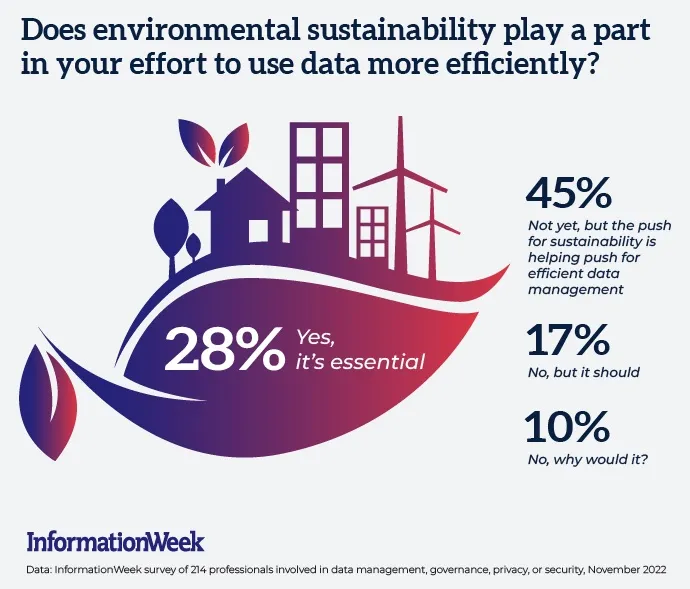As businesses wade deeper into a digital existence, it quickly becomes apparent that identifying and understanding cost structures is a torturous task. In the physical word, it’s relatively easy to add up the cost of trucks, warehouses, fuel, and machinery. Digital systems, on the other hand, descend into a murky netherworld of storage density, compression algorithms, code bloat, and compute load.
To be sure, the dynamics that drive costs within a digital enterprise — particularly regarding analytics, machine learning, artificial intelligence, and high-performance computing — are entirely different than those in the physical world, says Autumn Stanish, a principal analyst at Gartner. “In order to make key business decisions an organization must understand all the factors that contribute to digital costs.”
Addressing these issues is no simple task, however. Despite huge advances in ESG software and carbon trackers, there’s no single solution or technology available for delivering critical business insights about what data actually costs.
Meanwhile, regulatory reporting requirements are on the uptick and stakeholders and customers increasingly make investing and buying decisions based on environmental, social, and governance-related factors.
Making Eco Efficiency Compute
Deciphering digital cost structures starts with a basic recognition: Building a data-driven business is essential, regardless of what industry a company operates in. “Software and data analytics are growing massively. AI is becoming essential. We’re seeing more and more digitalized workflows. All of this consumes energy and comes at a cost,” states Christoph Sporleder, a partner at McKinsey & Company.
Today, about 1% of total greenhouse gas (GHG) emissions derive from digital systems, McKinsey Digital reports. While this pales in comparison to industrial input, the incredible growth of digital technologies isn’t something to disregard. For one thing, energy consumption is rising sharply and becoming a core part of business cost structures. For another, these costs are wrapped up in broader sustainability costs that affect organizations and society.
In an October 2022 report, Making Software and Data Architectures More Sustainable, McKinsey noted that the energy and resources required to operate software and data architectures are frequently overlooked. “Many IT leaders believe that software’s energy footprint is somewhat negligible or already optimized,” the authors explained. Yet, this typically isn’t the case. Making matters worse, “Hardware improvements will not keep up with growing software complexity.”
The result? Many companies wind up with overengineered interfaces, repetitive communication channels, redundant computation methods, inefficient storage, bloated code and underperforming data compression methods. Add in an infrastructure that lacks energy and eco efficiency and suboptimal energy procurement and the result is higher overall costs but also an inability to fully understand the price and performance variables that pertain to data-driven projects.
“We are getting to a point where an organization may have hundreds or thousands of analytical models to execute. Underneath all of this is a vast infrastructure,” Sporleder says. “It’s easy to overlook the fact that there are more favorable and efficient architectural frameworks. There are also ways to establish accounting methods that deliver valuable insights and help guide decision making.”
Deeper Insights: The Environmental Impact of IT
The challenges will accelerate in the months and years ahead. A recent InformationWeek survey found that 81% of respondents have witnessed an increase in data volume over the last year. The number one factor cited was “data analytics and data-driven initiatives.” When sustainability enters the picture, only 25% said that it currently plays an “essential” role, but 90% indicated that it “should” play a part.
Tracking CPU and GPU cycles and measuring direct energy costs isn’t overly difficult, yet things become far more byzantine when projects span countries, departments, cloud services, microservices frameworks, storage media, software packages, code libraries and more. “It may be clear that a model uses 15,000 CPU cycles in an hour, but the question becomes: When I put all the factors together and try to determine the costs, can I get an accurate number?” Sporleder asks.
Carbon accounting software and data analytics solutions from the likes of IBM, Microsoft, Boston Consulting Group and others can tackle part of the problem. These tools provide insights that can be plugged into projects to better understand energy use and cost structures. They can also help CIOs and others understand how different technology decisions play out — such as what type of storage technology to use.
But these tools can’t address the full spectrum of issues that arise as organizations look to evolve into data-driven enterprises. John Mennel, sustainability strategy leader and managing director at Deloitte Consulting LLP says that CIOs should also look to blockchain technology, IoT sensors, machine learning, AI, and other technologies. These systems, when they are combined and connected, can play an integral role in gauging actual costs related to analytics initiatives and other digital projects.
- 24" SPINNER LUGGAGE maximizes your packing power...
- PACKING Dimensions: 24” x 17.5” x 11.5”,...
- 10 YEAR LIMITED WARRANTY: Samsonite products are...
- MICRO-DIAMOND POLYCARBONATE texture is extremely...
- SIDE-MOUNTED TSA LOCKS act to deter theft,...
- 24-inch hardside spinner luggage for work travel,...
- Reliable strength with extra-thick ABS hard shell,...
- Easy to move with 4 double spinner wheels,...
- Expandable for up to 15% more packing space;...
- Product dimensions: 16.73 x 10.63 x 23.62 inches;...
When organizations have all this data on hand — along with the right mix of financial, environmental and social metrics — it’s possible to elevate business decision-making as well as sustainability. With reliable data and information on hand, an enterprise can also improve regulatory compliance and reduce business risks.
Data Drives Environnmental and Business Gains
Despite advances in tracking tools, data-driven decision making remains a bit elusive for many businesses. Stanish says that organizations must move beyond the idea that the space is too complex, and it isn’t worth the time and effort to build out a framework that’s capable of delivering granular visibility. “As digital adoption accelerates, these organizations may find themselves scrambling to manage costs and make wise business decisions,” she says.
On the other hand, when organizations reach a point where business and IT leaders have complete visibility into the real-world costs for software, data, energy, hardware, and other digital resources, it’s possible to see how various initiatives and analytics projects impact business and sustainability costs along with the actual return on investment (ROI) these projects generate. “Decision-making improves,” Stanish says.
At that point, CIOs and other business leaders can view the trade-offs related to materials sourcing, power consumption, the circular economy, coding efficiency, storage density, and much more. They can devote compute cycles to the digital projects that deliver the best returns — and those that guide the business to improved sustainability.
The iceberg will likely flip over the next few years, Sporleder predicts. As measurement methods improve, CIOs, CFOs, and other business leaders will become far more adept at gauging financial and sustainability costs. These organizations will become far more attuned to factors that create a competitive advantage in the digital world.
“In the future, every organization will have a set of tools that provide visibility into digital costs and consumption,” Sporleder says.
- 【PC Hardside Light Weight Luggage&Size】Made of...
- 【Large Packing Capacity】 artrips Hardside...
- 【Safety】The TSA lock ensures the safety of the...
- 【8 Silent 360°Spinner Wheels】 8 silent...
- 【Checked Luggage with Stripe Pattern Design】...
- 【Convenient Front Opening Cover】The front open...
- 【Built-in USB Port】The Travel Luggage Suitcase...
- 【Multifunctional Holder Design】Carry-On...
- 【With Lock & Anti Noise Wheel】Mounted...
- 【Superb Durable Material】The suitcase ABS+PC...
- The four-piece luggage set includes a travel bag,...
- The luggage is made of ABS+PC hard shell material,...
- Luggage installed with TSA locks, convenient for...
- Reinforced corners protect against impacts, so you...
- Quiet 360° swivel silent wheels and 2-step...







